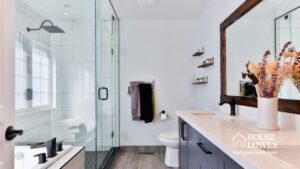Introduction to Dutch-Style Aquascaping
Have you ever imagined what it would be like to own an underwater garden that could rival the beauty of a Dutch tulip field? Well, that’s basically what a Dutch-style aquascape is. It takes your regular aquarium and flips it into a dazzling masterpiece full of organized, colorful, and mesmerizing house plants Dutch style. Think of it as creating a living work of art that feels like it was drawn straight out of a house drawn plant Dutch style storybook. Pretty cool, right?

This guide is about bringing that magic into your life. Trust me, whether you’re a total newbie or someone who’s already dipped their toes into aquascaping, Dutch-style aquascaping is one of the most exciting (and addicting) styles to master. It’s like learning how to play with plants, water, and creativity all at once.
The History of Dutch-Style Aquascaping
First off, let’s talk about where this all started. Dutch-style aquascaping began in the 1930s in the Netherlands. Yep, the same country known for tulips and windmills also gave birth to this incredible aquarium style. Back then, aquarists wanted their tanks to reflect gardens, packed full of life and color, without needing heavy rocks or driftwood to prop them up.
Unlike other styles that mimic nature, Dutch aquariums are mostly home to house plants Dutch style arranged into neat, vibrant layers. Each plant plays a specific role in creating depth and contrast, making the tank look much larger and brighter than it is.
It’s like taking the structure and neatness of a well-drawn house garden and transferring it underwater. Did I just describe your dream tank? If yes, let’s figure out how to create one.
What Makes the Dutch Style Special?
Here’s what makes this style a real show-stopper. Dutch-style aquascaping focuses heavily on plants. That means no bulky rocks, no gnarled wood, and no artificial decor. Instead, it’s all about grouping house plants Dutch style so they pop with contrasting colors, textures, and sizes. The result? A tank that looks like a mini underwater forest, only with lanes, terraces, and pathways. It’s like a dollhouse garden but wetter.
Another fun feature is something called the “Dutch street.” This is the idea of organizing plants in a way that forms clear pathways for your eyes to follow. Imagine looking at a house drawn plant Dutch style aquarium and feeling like you can walk through its tiny paths. That’s how captivating this style can be.
Oh, and don’t forget this part. Color is the true queen in Dutch aquascaping. You’ll find bold greens, fiery reds, and delicate pinks all working together to create a vibrant symphony right in your living room. It’s honestly jaw-dropping.
Why You’ll Fall in Love with Dutch Aquascaping
There is an emotional magic to building a house plants Dutch style tank. Imagine coming home after a long day and being greeted by your own hidden garden that glows and thrives underwater. It’s not just satisfying but deeply therapeutic. Plus, every person who sees it will be amazed (trust me, aquarium envy is a thing).
What’s even better is how personalized you can make it. You’re not just building a tank. You’re creating a little piece of you. Maybe you love bright, punchy plants. Maybe you prefer subtle elegance and calm. The choice is all yours.
How Dutch Aquascaping Differs From Other Styles
Alright, let’s clear up some confusion. You might have heard about Nature or Jungle-style aquariums. Both are gorgeous, but Dutch-style tanks are a whole different beast.
For starters, Nature aquariums mimic natural landscapes, like mountains or rivers, while house plants Dutch style focuses purely on visual beauty through plant organization. There’s nothing natural about it, and that’s the point. If Nature aquascaping is like dressing casual for a day at the park, Dutch style is like putting on your fanciest outfit for a photoshoot. It’s extra, and we love it.
Jungle tanks? Oh, those are wild and lush, like an untamed rainforest. The Dutch style refuses chaos. Instead, every piece of the tank feels deliberate and structured, like it was pulled straight from a house drawn plant Dutch style blueprint.
How to Get Started
You might be thinking, “This sounds amazing, but where do I even begin?” Don’t worry, I’ve got your back.
1. Pick the Right Tank Size
- Most Dutch aquascapes thrive in longer tanks. However, a small one can work as long as you carefully scale down the plant choices and focus on maintaining neat layers.
2. Choose Your Plants
- Dutch aquascaping feels impossible without the right plants. To nail that house plants Dutch style look, focus on fast-growing stem plants, dark earthy-toned Cryptocorynes, and some bold-colored species like Alternanthera Reineckii (those stunning red leaves).
3. Spacing is Vital
- Making a Dutch aquarium doesn’t mean shoving plants randomly. The key is to use creative spacing to make it look layered. Think like you’re planting an underwater garden for ants. Tiny spaces matter.
4. Add Lighting
- Without proper lighting, plants won’t show their true beauty. For house plants Dutch style setups, aim for LED lights with adjustable intensity. It brightens up your tank, making those reds, greens, and yellows pop.
5. Master the Dutch Street
- This is like acing the Dutch aquascaping final exam. Here, you’ll need to arrange layers of plants in such a way that they mimic pathways. Using low plants for the foreground and taller plants for the mid-ground will help guide the viewer’s eyes, creating that wonderful “street effect.”
Why Patience is Everything
Here comes the truth bomb. Dutch aquascaping is not an overnight project. It takes weeks or even months for plants to grow into their new home and start taking on that breathtaking vibe you’re aiming for. Your house plants Dutch style tank will go through what’s called the “awkward teen stage.” But stick to it. With time and care, you’ll see layers grow into a stunning aquatic garden.
FAQ Section
Q1. Can I include rocks and driftwood in a Dutch setup?
A1. Technically, the Dutch style avoids these elements in classic setups. If you really love them, feel free to add tiny accent pieces. Just don’t make them the stars.
Q2. Do I need to trim plants often?
A2. Yes! This is one part of the house drawn plant Dutch style that’s non-negotiable. Keeping plants trimmed ensures your tank stays fresh, neat, and visually striking.
Q3. How many plants do I need?
A3. For a Dutch tank, aim for about 10-15 species depending on your tank size. Remember, variety helps you create depth and contrast.
Q4. Is it beginner-friendly?
A4. Definitely! It looks intense, but with guidance (like reading this, wink wink), anyone can tackle Dutch aquascaping.
Q5. Will fish work well in Dutch tanks?
A5. Absolutely. Peaceful schooling fish like neon tetras or rasboras thrive in this style and add movement to the still beauty of the plants.
Wrapping It Up
And there you have it, the beginning of your Dutch-style aquascaping adventure! Picture it now. A house drawn plant Dutch style aquarium glowing in your living room, enchanting anyone who sees it. It’s a living piece of art that reminds you daily why aquascaping is both a discipline and an emotion-filled escape.
Just remember, there’s beauty in the process, not just the result. Now go ahead. Grab your plants, set up your tank, and prepare to wow the world with your underwater masterpiece.







